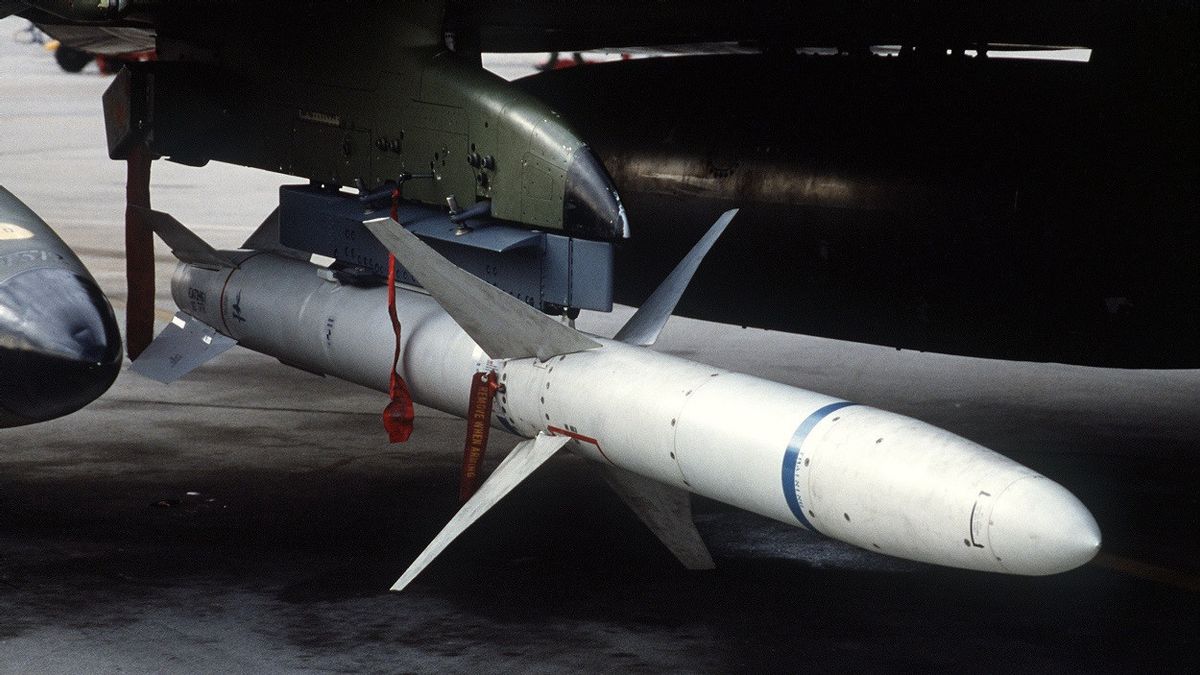JAKARTA - A special missile that destroyed Russian radar has become an "important factor" in Ukraine's recent success, after being secretly armed to their jets, military analysts said.
Working quietly over the summer, US engineers address the technical challenges of pairing a High Speed Anti-Rediation Missile (HARM), to Ukraine's Russian-made fighter aircraft.
The technology has given Ukraine's air force a strong counterattack with missiles aimed at radiation transmission at a speed of 3,200 kilometers per hour, destroying Russian radars or forcing them to close to evade detection.
This has provided safe airspace for Ukrainian drones, missiles and aircraft to launch attacks with the HARM system playing an important role in Kyiv's retaliatory attacks, in which government forces have recaptured vast territories in occupied areas.
"What HARM is doing to Russian air defenses is an important factor," said Sam Celebrity-Evans, a Russian military specialist in the RUSI think tank, reported The National News September 30.
"Their radar plays a very important role in reducing the damage to the HIMARS missiles and drones which means they really can't lose them," he said.
Radar is critical in identifying incoming airstrikes, as well as guiding air defense systems such as the TorM2 missile system, which is capable of shooting down US-supplied HIMARS precision missiles.
Indicating increased sophistication in modern warfare, Ukraine sent drone strike packages and salvo HIMARS, after the HARM attack that destroyed radar or forced Russia to shut it down, shifting their defenses.
The reappearance of Turkey's Bayraktar TB2 fighter drone, which is vulnerable to Russian air defenses, also shows radiation missiles limiting radar.
The keys to this are a very fast adaptation of American-made missiles to MiG-29, Su-27, and Su-30 jets, something the US Pentagon recently confirmed.
"It's not an easy task," said Nick Brown, director at Janes, defense intelligence provider.
"Using HARM is not as easy as tying missiles to warplanes and pulling fire. The coding of software, avionics, and sensors in Sukhoi Su-30 or MiG-29 is a world far from western fighter aircraft designed to be armed with the missile," he explained.
Working in secrecy during the early summer, it can be understood that American specialists installed missiles and tested them in a relatively safe place in western Ukraine.
"It's an achievement you would normally expect this kind of thing, taking a very long time in a matter of months or test year, especially in how missiles interact with aviation control software," said RUSI air warfare specialist Justin Bronk. "It's impressive that they're doing it in a few months," Bronk praised.
Dketahui, versi HARM yang digunakan adalah model AGM-88B yang telah berhasil digunakan selama operasi di Irak, bekas pengguna dan Libya.
The 350 kilogram missile has a searcher with a range of 145 km capable of finding and hitting the radar, sometimes even after it's turned off.
"The anti-radiation missile allows you to create access windows for other aircraft to enter and do things within the reach of that defense system," Bronk explained.
"Of course there are some Russian radars that have been described as apparently destroyed by the HARM, as well as some of the SA15 self-propelled short-range missile air defense systems that have been damaged," he said.
"The entire HARM goal is to kill the radar, the version that has entered the fight in Ukraine has a pairing, to find a radar transmitter and be inside it at a speed of more than 2,000 miles per hour [3,200kph], sending a fragmented warhead designed to damage antennas and control buildings," explains Brown of Janes.
It is known that Kyiv's clever use of HARM has now resulted in nearly a reversal of who controls the sky, giving it the ability to launch airstrikes into Russian positions, something previously thought was unintentional.
"The presence of anti-radiation capabilities in theaters has forced Russian troops to change their radar deployment plans and enforce more complex use patterns, turn off radar and move them, lower their situational awareness at a strategic level and enable Ukrainian air operations. provide greater freedom of movement," Brown said.
It also shows increased sophistication of Kyiv troops originating from equipment and training supplied west, said Sam Steering-Evans.
"Ukraine now has many different ways of threatening the Russian system while only in July, before HIMARS and HARM arrived, their choice was to try not to die," he said.
"Now they can fight back and start taking action, to attack Russia with real effectiveness."
The English, Chinese, Japanese, Arabic, and French versions are automatically generated by the AI. So there may still be inaccuracies in translating, please always see Indonesian as our main language. (system supported by DigitalSiber.id)









